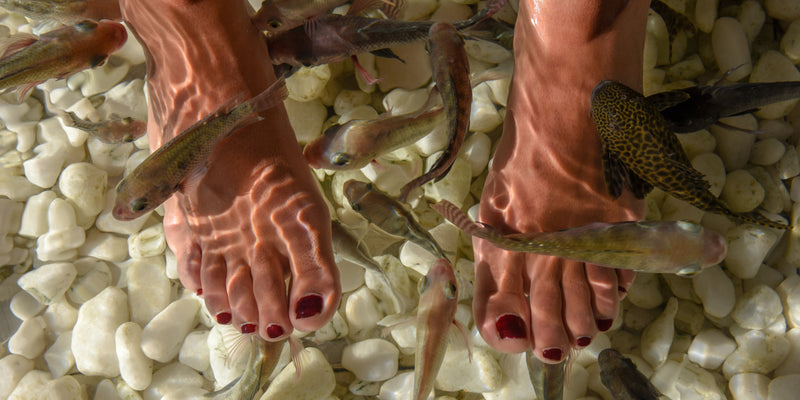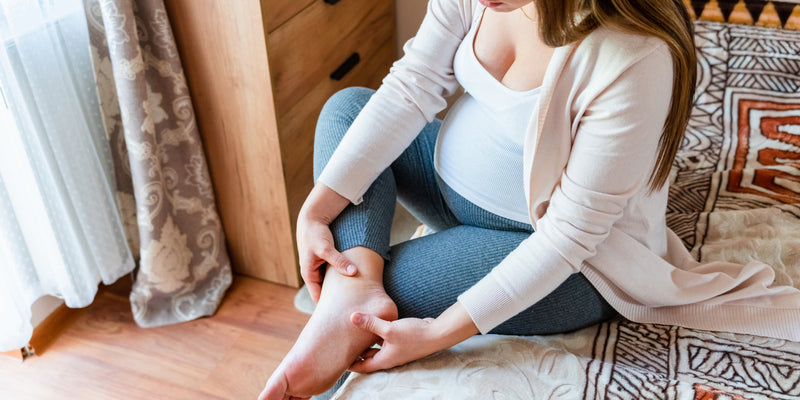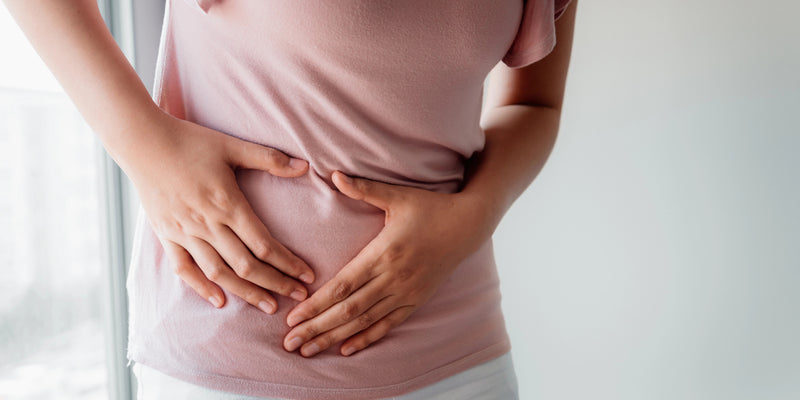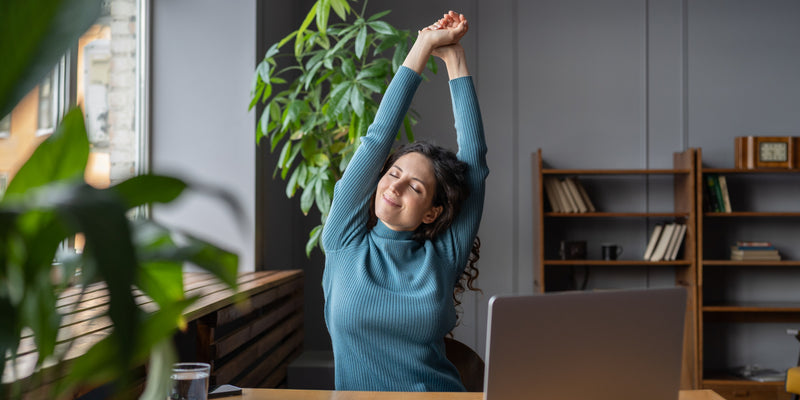If you struggle with the uncomfortable symptoms of varicose veins, such as achy, swollen legs, you're not alone. Millions of people worldwide deal with this common circulatory issue, which can cause significant discomfort and impact your quality of life.
While there are various treatment options available, one simple yet effective solution you may want to consider is using a leg massager. Leg massagers can provide targeted relief for varicose vein-related pain and swelling, helping to improve blood flow and alleviate uncomfortable symptoms.
So, say goodbye to leg discomfort and hello to soothing relief with the help of a high-quality leg massager.
What Are Varicose Veins?

Varicose veins are a common condition that affects many people around the world. These enlarged, twisted veins most commonly occur in the legs and can be both unsightly and uncomfortable. Varicose veins occur when the valves in the veins weaken or become damaged, causing blood to pool in the veins and leading to their enlarged and bulging appearance. While varicose veins are often harmless, they can cause symptoms such as pain, aching, swelling, and overall heaviness in the legs. In some cases, varicose veins can lead to more serious complications such as blood clots or ulcers.
What Causes Varicose Veins?
Several factors contribute to the development of varicose veins, including chronic venous insufficiency, raised and winding ropes, compression therapy, swelling and pain, and pregnancy.
Chronic venous insufficiency is one of the main factors that lead to varicose veins. It occurs when the valves in the veins become weakened or damaged, causing blood to flow backward and pool in the veins. This increased pressure causes the veins to stretch and become varicose.
Another contributing factor is the raised and winding appearance of the affected veins. The valves of the veins play a crucial role in preventing blood from flowing in the wrong direction. When these valves become dysfunctional or weakened, the blood accumulates and enlarges the veins, resulting in varicosities.
Compression therapy is often recommended for individuals with varicose veins. It involves wearing special stockings that apply pressure to the legs, promoting better blood flow and reducing swelling. Compression therapy helps alleviate symptoms and prevent the progression of varicose veins.
Swelling and pain are common symptoms associated with varicose veins. The increased pressure and poor blood flow can cause the legs to swell and become painful. This discomfort is often relieved by elevating the legs or using compression stockings.
Pregnancy is also a significant contributor to the development of varicose veins. During pregnancy, the volume of blood in the body increases, while hormonal changes relax the walls of the blood vessels. These factors can lead to weakened valves and increased pressure in the leg veins, resulting in varicose veins.
Why Is It Important to Address Varicose Veins?

Varicose veins, though often considered a cosmetic concern, can have serious health implications if left untreated. It is crucial to address varicose veins for several reasons.
Firstly, untreated varicose veins can lead to various risks and complications. These include blood clots, ulcers, and skin infections. Blood clots, also known as deep vein thrombosis (DVT), can be life-threatening if not detected and treated promptly. Furthermore, ulcers can develop on the skin near varicose veins, which are painful and difficult to heal. In severe cases, these ulcers can become infected, causing further complications.
Besides the physical risks, varicose veins can significantly impact daily activities and overall quality of life. The discomfort and pain associated with varicose veins can make it challenging to engage in regular exercise or physical activities. This can lead to a sedentary lifestyle, further increasing the risk of other health conditions such as obesity and heart disease. Moreover, varicose veins can cause self-consciousness and affect one's confidence and body image. Individuals may avoid wearing certain clothing or feel embarrassed about the appearance of their legs.
How Does Varicose Veins Affect Blood Flow?

One of the main changes in blood flow caused by varicose veins is the reverse flow or reflux of blood. Instead of flowing smoothly towards the heart, blood can flow backwards or stagnate in the affected veins. This can lead to the pooling of blood in the lower extremities and can result in symptoms such as leg pain, swelling, and fatigue.
Impaired blood flow due to varicose veins can have various implications on the circulatory system. It can hinder oxygen and nutrient delivery to the tissues, leading to tissue damage and slower healing. Furthermore, the accumulation of blood in the veins can increase pressure within the vessels, potentially causing inflammation and ulcers.
Complications associated with varicose veins and poor circulation can be significant. Chronic venous insufficiency, where the veins fail to effectively transport blood, may develop. This can lead to skin changes, leg ulcers, and even deep vein thrombosis, a blood clot in a deep vein. Additionally, the risk of varicose veins worsening and causing further complications, such as phlebitis (vein inflammation) and bleeding, is increased.
Can a Leg Massager Help with Varicose Veins?

Varicose veins are not only unsightly but can also cause discomfort, pain, and in severe cases, pose serious health risks. Many people suffering from varicose veins are constantly on the lookout for effective treatment options. One such option that has gained popularity is leg massagers. These compact devices have been claimed to alleviate the symptoms of varicose veins and improve overall circulation in the legs. While leg massagers cannot eliminate varicose veins, they may provide temporary relief and help manage symptoms like pain, swelling, and discomfort.
5 Benefits of Using a Leg Massager for Varicose Veins
Varicose veins are a common condition that affects many individuals, causing discomfort and swelling in their legs. However, using a leg massager can provide numerous benefits to those suffering from varicose veins.
- Improves circulation: One of the primary benefits of using a leg massager for varicose veins is its ability to improve circulation. The massaging action stimulates the blood vessels, helping to push blood back towards the heart and improve the overall blood flow in the legs. This enhanced circulation can reduce the appearance of swollen veins and alleviate pain and discomfort.
- Reduces swelling: The gentle pressure exerted by the leg massager can help to reduce swelling in the affected areas. By stimulating the lymphatic system, the massager assists in draining excess fluid from the legs, decreasing both swelling and the associated discomfort.
- Alleviates discomfort: Varicose veins can be painful, causing aching and throbbing sensations. However, a leg massager can provide much-needed relief. The massaging action promotes the release of endorphins, which are the body's natural painkillers. These endorphins can help to alleviate discomfort and provide a soothing effect.
- Increases blood flow: The targeted massage delivered by a leg massager helps to increase blood flow in the legs. This improved circulation enables the delivery of vital oxygen and nutrients to the affected areas, promoting healing and reducing the risk of further complications.
- Promotes muscle relaxation: Another benefit of using a leg massager for varicose veins is its ability to promote muscle relaxation. The gentle kneading and compression delivered by the massager help to relieve tension in the muscles, reducing stiffness and enhancing flexibility.
Takeaway
Varicose veins are a common circulatory issue that can cause significant discomfort and impact one's quality of life. While there are various treatment options available, using a leg massager can be a simple yet effective solution to help alleviate the symptoms associated with varicose veins.
Leg massagers can provide targeted relief by improving circulation, reducing swelling, alleviating discomfort, increasing blood flow, and promoting muscle relaxation. By using a high-quality leg massager, individuals dealing with the uncomfortable symptoms of varicose veins can find soothing relief and improve their overall well-being.
Remember, while a leg massager can provide temporary relief, it is essential to consult with a healthcare professional to address the underlying causes of varicose veins and explore comprehensive treatment options. By taking a proactive approach to managing this condition, individuals can take charge of their leg health and enjoy a more comfortable and active lifestyle.
Renpho Health Tips
-

Are Fish Foot Spas Safe? What You Need to Know Before Dipping Your Toes
June 6, 2024
Read more >
-

Relieving Pregnancy Pains: How Foot Massage Can Help
June 3, 2024
Read more >
-

How Foot Reflexology Can Provide Relief for Menstrual Cramps
May 23, 2024
Read more >
-

Foot Reflexology for Prenatal Wellness: A Holistic Approach to Pregnancy Care
May 16, 2024
Read more >
-

Relieve Stress and Enhance Relaxation: The Therapeutic Benefits of Compression Massage
May 14, 2024
Read more >

